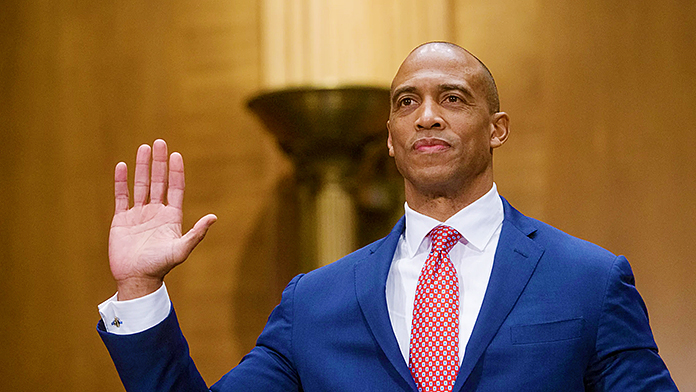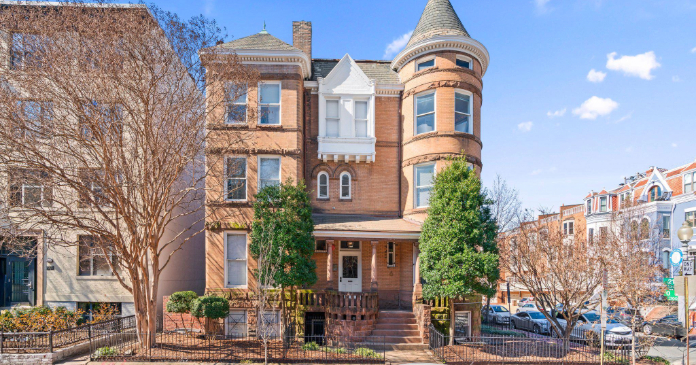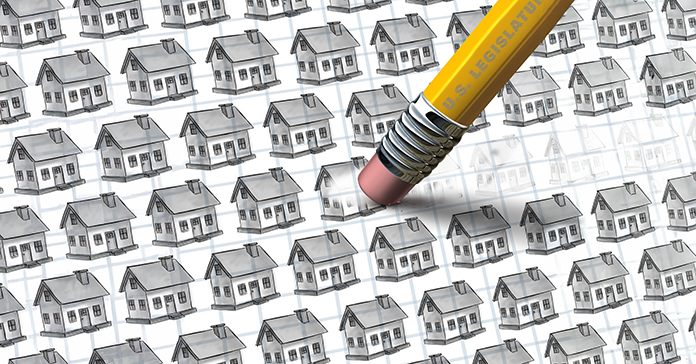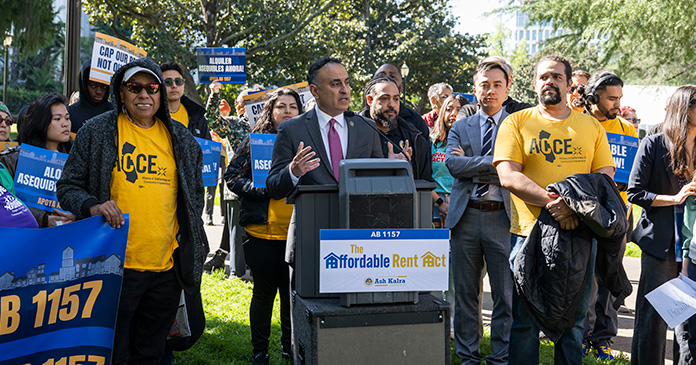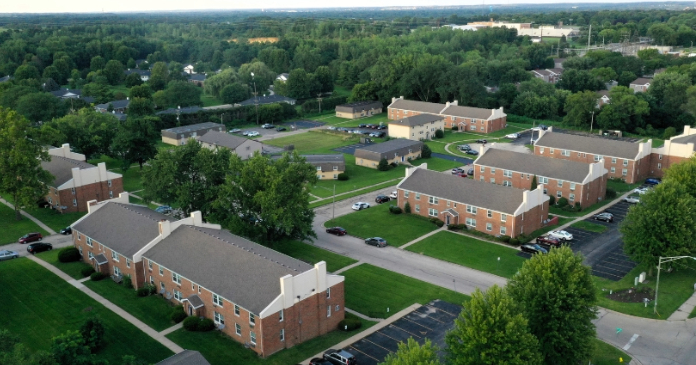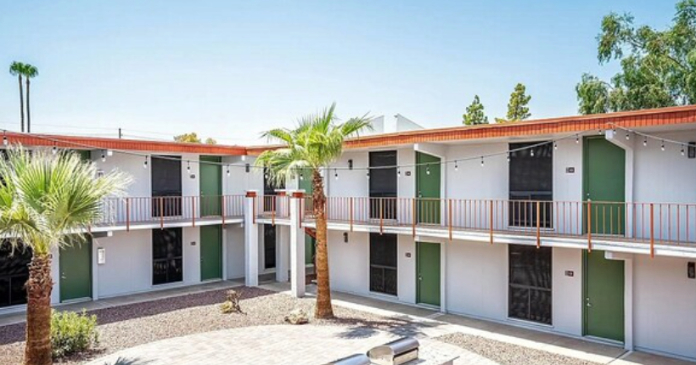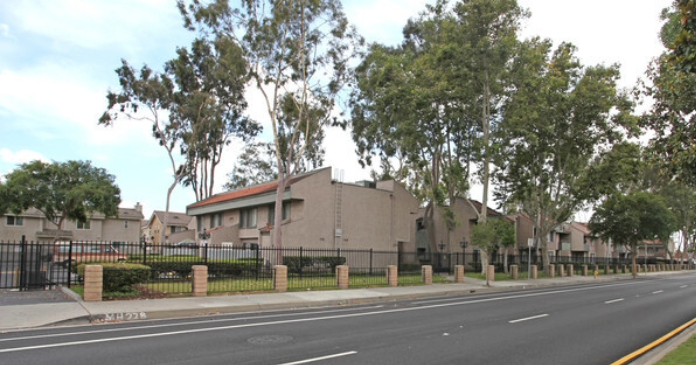Sales of apartments to converters generated a record $13.3 billion last year, and this year’s numbers could be even higher. But has the market already reached the top?
Amid rampant speculation that the recently white-hot U.S. residential real-estate market is now cooling, the rate of apartments being converted into condominiums keeps accelerating.
Sales of apartment buildings to condo converters amounted to a record $13.3 billion last year, according to Manhattan-based property research firm Real Capital Analytics, up from only $3 billion in 2003.
That dollar amount could be even greater this year — through June 15, converters had bought $7.05 billion in apartment properties.
Marcus & Millichap Research Services counted 70 large conversion sales just in the first quarter — a pace that will top the 249 tallied in all of 2004.
The trend is particularly hot in places like Valencia, Calif., where CB Richard Ellis’ recent $19.7 million purchase of the 100-home River Canyon Apartments — now, the River Canyon Condominiums — adds to a statewide list of 2005 conversion projects that could very well eclipse the 75 major conversions carried out last year.
For its part, Florida is the condo-conversion capital of the nation, hosting 86 in 2004. Most of those were in Miami, where buyers paid a median price of $127,503 for converted apartment homes, 27 percent more than the amount paid for non-conversion properties.
In Manhattan, buyers paid a median price of $508,602 for conversions for a whopping 125 percent premium over non-converted apartments.
Of course, as usually happens with these types of hot markets, the words “bubble” and “burst” get paired a lot these days.
Fitch ratings predicts that roughly 10 percent of condo conversion loans originated in 2005 will ultimately default.
“I think we’re sort of at the peak of this trend,” says Joel Kotkin, a noted authority on urban development. “The cap is what people can afford.”
Still, despite the seemingly excessive prices buyers are paying for condos these days, analysts say that at least in terms of data, the market’s arc is still pointed upward.
“We’re not seeing any ebbing just yet,” notes Hessam Nadji, Marcus & Millichap’s managing director of research services. “Both in terms of deals and dollar values, we saw increases in the second quarter, too. As far as this notion that the market will soften, we’re not there yet.”
For apartment managers, this trend continues to constitute what National Multi Housing Council president Doug Bibby calls a “double-edged sword” — a shrinking supply of apartments as they’re converted to condos, offset by a lessening amount of renters, who venture into the market to purchase condos.
“Our rents are stabilizing, and the fundamentals of the rental market are improving,” Bibby says. “In fact, some would argue that [the condo conversion trend] has made them look artificially better than they are.”
According to REIS, Inc., vacancy rates for apartments nationally are trending down towards 6 percent after peaking at nearly 7 percent during 2002 and 2003. Average rents are once again growing and are set to hit an all-time high of $1,000 next year.
“But when the condo music stops, and it will stop, the people who will be left holding the bag will be the investors themselves,” Bibby adds. “They’re going to panic, and they’re going to put their condos back on the market as rentals, and that will put a lot of downward pressure on prices.”
For his part, Nadji agrees the condo conversion trend will cool at some point — probably around the same time that the low interest rates that have been fueling it increase to about 7.5 percent for 30-year fixed mortgages and the ample supply of lending capital finally dries up a little bit.
However, the effects of this cooling trend will differ greatly from region to region, he explains. “We don’t expect there will be this national bubble bursting,” Nadji says. “The effects on the condo market will be very local. It’s very much driven by the local housing shortage or excess.”
Areas with little in the way of surplus housing and featuring large differentials between house and condo prices — such as Los Angeles, San Francisco and Washington, D.C. — aren’t as likely to see a flood of unsellable condos suddenly hit the rental market if interest rates rise and capital becomes a little more constrained.
“In large parts of California, people still can’t afford a single-family home, so I don’t think of L.A. as necessarily having a condo housing bubble,” Bibby says. “But it’s another matter in parts of South Florida and Las Vegas.
Indeed, there is a risk in markets that are less constrained in terms of housing supply. In Las Vegas, for example, a recent over-abundance of for-sale housing abruptly cooled the local real estate market. The time condos spent on the market suddenly tripled, and sellers started offering discounts of $100,000 or more.
“There was a feeding frenzy, but many of those investors are going to have to bring those condos back on the market as rentals,” Bibby adds.
Author: Daniel Frankel




